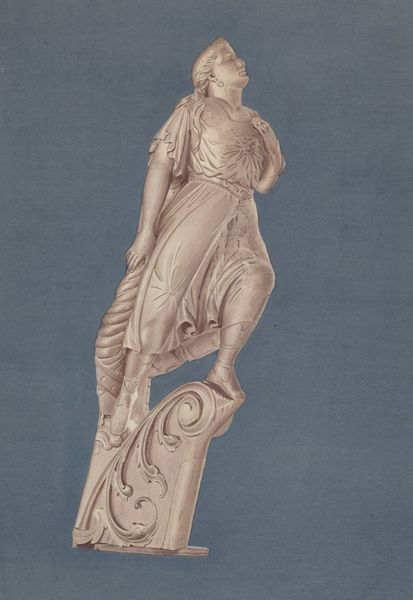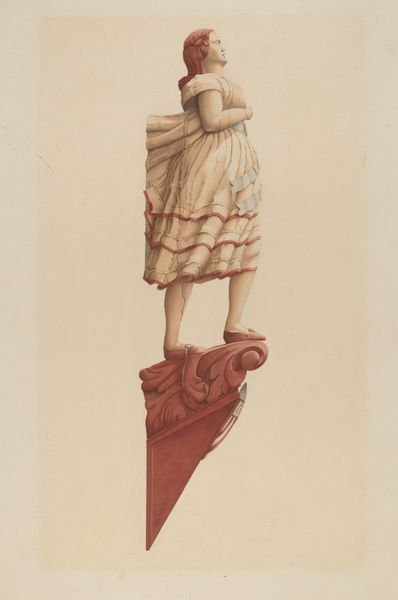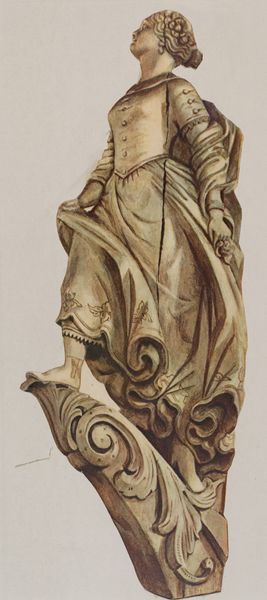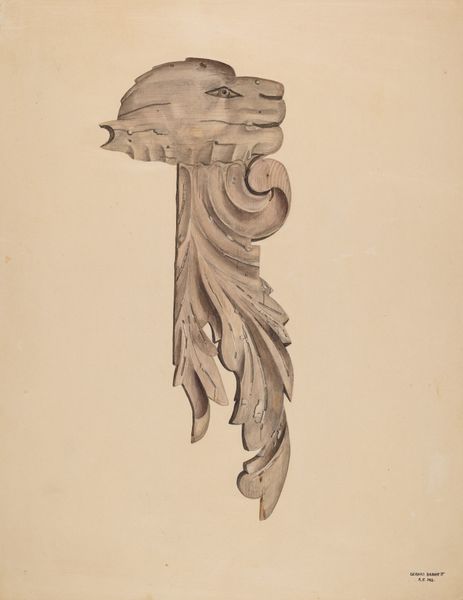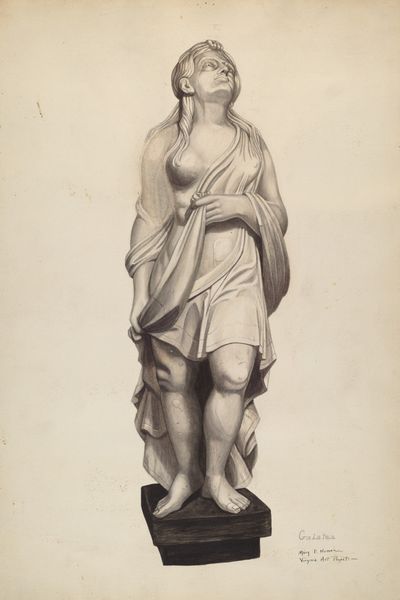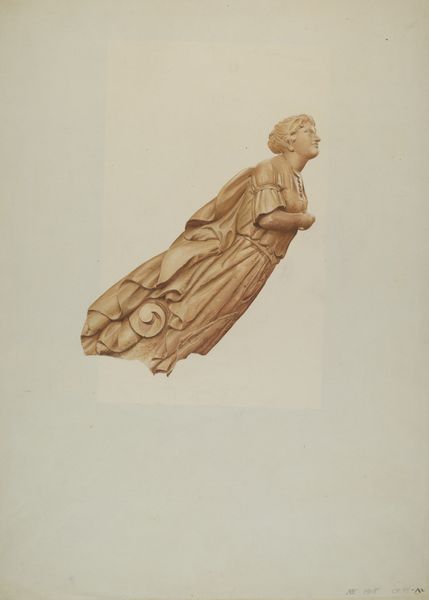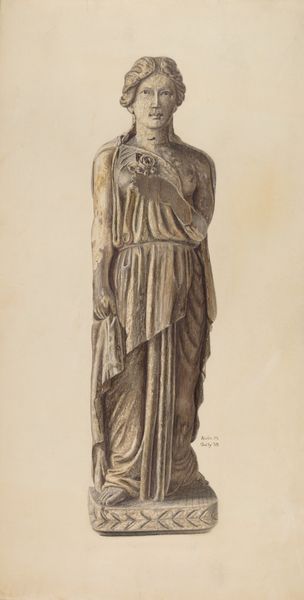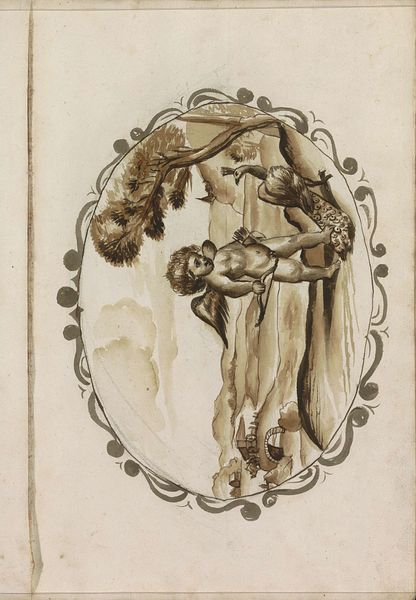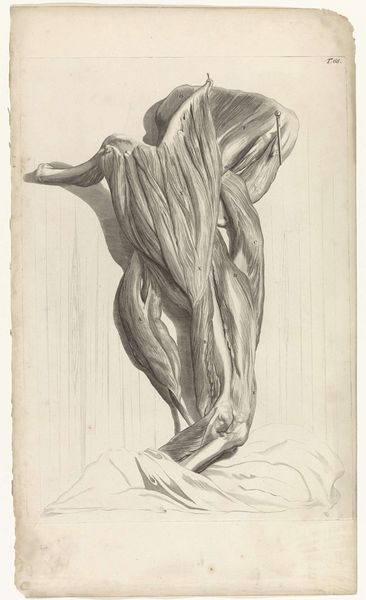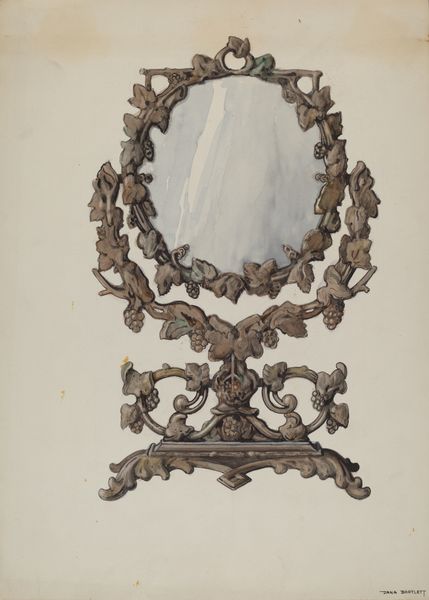
drawing, carving, watercolor, sculpture
#
portrait
#
drawing
#
carving
#
charcoal drawing
#
figuration
#
watercolor
#
pencil drawing
#
sculpture
#
portrait drawing
#
realism
Dimensions: overall: 51.9 x 33.2 cm (20 7/16 x 13 1/16 in.)
Copyright: National Gallery of Art: CC0 1.0
Curator: Here we have "Figurehead: Woman," dating from 1935 to 1942. Editor: It's an unusual composition—the monochromatic palette gives it the feeling of a sepia photograph, like a relic of nautical history. But, judging by the texture, it doesn’t actually seem to be a photograph. Curator: Indeed, this representation combines the traditions of drawing and sculpture. The work is constructed with watercolor, charcoal, and pencil, giving it a layered materiality that conveys form, shadow and volume. And you’re right, it recalls nautical history—this study captures a wooden figurehead typically found on the prow of a sailing ship. Editor: Knowing it is a drawing of a sculpture illuminates some of my first impressions. I'm immediately struck by the artist's meticulous handling of line to mimic wood grain, the detail in the dress—you can almost feel the weight and texture of the fabric. I’m curious about the labor involved in its original sculptural production. What can you tell me about how this specific type of object circulated in its time? Curator: Figureheads served a symbolic, often patriotic function. The original carving would have literally been at the forefront of maritime ventures, bearing witness to historical developments as sailing ships gained dominance over oceanic routes. So these weren't merely decorative—they served an important purpose in the cultural and social imaginary. Editor: Right, it’s fascinating how such a traditionally handmade object was placed on this massive vessel, mass-producing connections between various locations and economies. Curator: It brings the distant past into view. Now that we’re talking about it, I can see an aspirational aspect, in which the woman represents courage. Editor: The skill in depicting not just the figure, but also the raw materials from which the sculpture emerges, really makes it pop. Curator: This artistic piece exemplifies a historical point, showing the intersection of craftsmanship, art, and the grand narratives of seafaring. Editor: It definitely shifts my perspective to appreciate the means by which art operates within wider productive networks, shaping both historical interpretation and aesthetic appreciation.
Comments
No comments
Be the first to comment and join the conversation on the ultimate creative platform.
